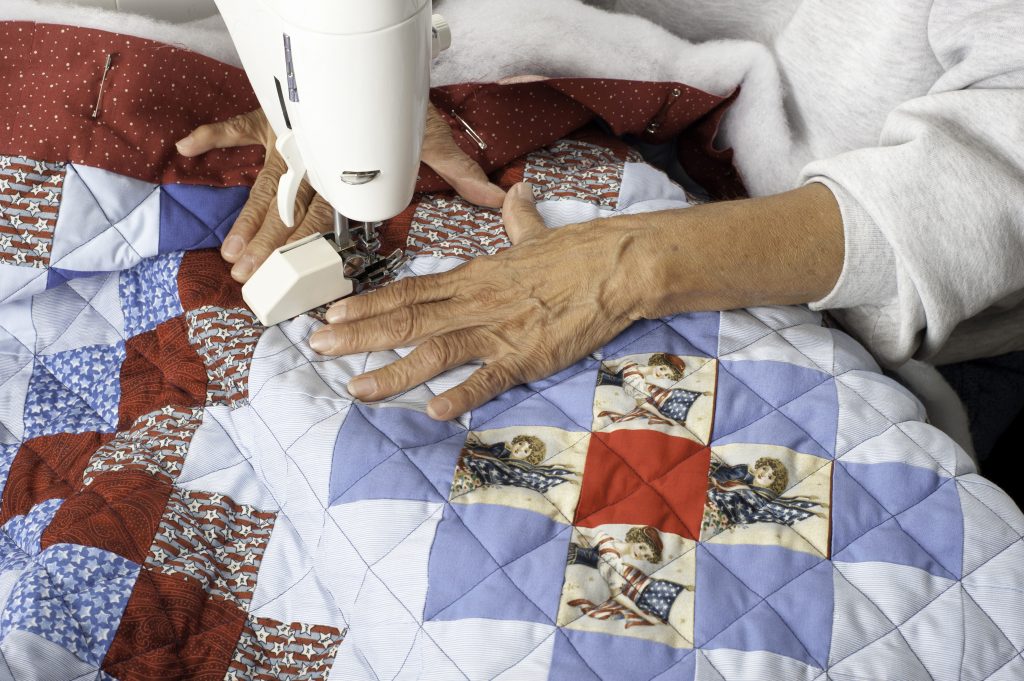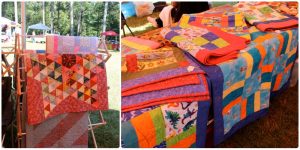Use Scant ¼” inch seam. Most patterns call for a scant ¼’ inch seam. Smaller seams, especially those not secured on the edge of the quilt, can pull out when stretched on a long arm quilting machine. Secure exposed edges of seams.
Press seams flat. It is best to press as you go, but regardless, you need to press the seams flat before sending the quilt to be quilted. Un-pressed seams will result in imperfect quilting. We will press if we must but will charge you our maximum hourly rate to do so.
Clip loose threads. Loose threads will show through the light fabrics in your quilt after the quilting is done.
Square the quilt top. Quilt attaches to leaders that roll. A crooked edge will result in a twisted quilt. We recommend scalloped edges be cut after the quilt is quilted. Tell us if this is the plan and we will work accordingly.
Pin a note to mark top if quilt is directional. Marking the back if it is directional is also important. This is not necessary if there is no directionality.
Embellishments such as buttons, beads, ribbons etc. should be added after the quilting is done.
We cannot quilt out bulges from wavy borders or blocks. Check blocks before piecing together to make sure they match. Measure quilt in three inner places before cutting border and average the measurements. Do not sew a longer piece to the edge and then cut off the extra, or ease in a border that is what the blocks should have added up to. The extra fabric will fold over and bunch under the quilting machine.
Backing and batting: Busy fabrics on back tend to hide machine starts and stops. Custom quilting always requires many seam ends. Edge to edge quilting is more forgiving but will still show when the bobbin thread runs out.
A ½” inch seam is recommended if your backing is seamed. Many people now piece the back of their quilts. This is suitable as long as you realize we cannot guarantee the back will be centered on the top.
Remove selvedge edges from seam before sewing. Selvedge edge has a different stretch than the rest of the fabric and will result in a pulled look if left in the seam.
Backing of quilt must also be squared.
Batting labeled as appropriate for machine quilting is needed. Some batting, especially polyester loose weave, will pull too much on the machine.
Backing and batting must be 4-6 (6 preferred) inches larger than quilt front. Backing and batting attach to the leaders at top and bottom and to clips on the side of the frame. Extra fabric is needed to do this.
Do not use sheets as backing. Sheets do not stretch the way quilting fabric does, and they are more closely woven which wears out the needles faster.
Do not baste backing, batting and top together. More information on this website
